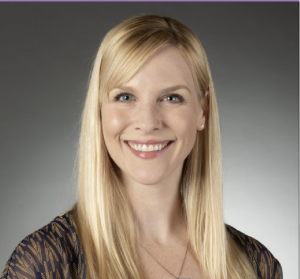UNCA art and music departments alter courses to follow COVID-19 protocols
February 8, 2021

Associate Professor of Music Chirstine Boone said the music department remains just as safe as the other on campus departments
According to third year printmaking student Ava Lozuke, the studio art department is going through a major restrictive period surrounding COVID-19 guidelines, just not in the same manner as the other departments.
“We already had latex gloves and masks in our lockers, because we work with harsh chemicals that you can’t breathe in,” Lozuke said.
Due to the nature of the courses comprising the printmaking major courses, students have been required to wear masks and gloves at all times since the degree has been offered at UNC Asheville, a new addition in the wardrobes of most students in other departments. Despite already existing policies surrounding protective gear, the studio art building also has a high mask protocol that requires masks to be worn inside the building at all times with no exceptions, not even for a sip of water.
“What I like about art is that it’s very hands on, and all of sudden we have these added barriers like, not being able to look at another student’s sketch for inspiration,” Lozuke said.
Studio art students, such as Lozuke, find utility in communication of ideas which is becoming increasingly difficult in every field or area of study. They have also found new restrictions surrounding use of machinery and materials a hindrance to their educational endeavors. Students must file their names on a log sheet in order to use equipment after hours, which were free for use before COVID-19.
“The main inconveniences come from the strict mask requirements in the studio building,” said two ceramics students of Art and Art History Professor Megan Wolfe. Hands on work in other art departments is very different from hands on work in printmaking. While students such as Lozuke were already used to the protective equipment required for safety, students majoring in ceramics or folk art see it as a new, experience-altering requirement.
“Courses that require students to be in close proximity have been placed on lower enrollment caps and each student is given their own space to work, six feet apart from all other students,” Wolfe said.
Some courses such as pottery or sculpture classes had students in working stations, cleaning stations, and drying or setting stations in very close proximity to one another due to the absence of a pandemic and large enrollment in courses that take place in small rooms. To combat this, art and art history professors such as Wolfe lowered the maximum number of students allowed to enroll. This gives the students that are enrolled much more allotted space while they are working.
“If there weren’t any guidelines in place, studio art would definitely be one of the programs with the highest levels of transmission,” Lozuke said.
They explained that all of the cleaning materials and machinery that is used on a day-to-day basis in their classes is shared by all of the students enrolled in these courses, so if it weren’t for the restrictions and guidelines surrounding safe and proper use of the equipment provided, studio art departments may have higher levels of transmission due to higher levels of contact.
“It’s all pretty touch heavy,” Lozuke said.
According to Christine Boone, an associate professor of music at UNCA, the music department, despite having to take further precautions, remains just as safe as the other departments on campus.
Boone has been teaching at UNCA for seven years and has been practicing her instrument, the voice, since she was only five years old. She has a bachelor’s degree in vocal performance and a doctorate in music theory.
“The music department really quickly discovered that singing and playing wind and brass instruments are among the most dangerous things you can do in terms of transmission,” Boone said.
With the majority of the classes Boone teaches at UNCA being vocally-based, she had the first look at how heavily these practices would transmit COVID-19.
“These video-chatting services are not equipped to deal with music performance,” Boone said.
The spring semester of 2020 ended with an abundance of ensemble directors compiling video projects for the existing recitals and concerts, which according to Boone, is great for showing off video-editing skills, but doesn’t teach the students what they need to know.
To combat this issue of video communication not living up to the standards required by the music department, end-of-semester concerts and recitals will take place in Lipinsky Hall on the main stage, but audiences will not be allowed in-person. All audience members must participate over video-chatting services while the performers are set up on stage socially distanced. Performers must wear masks if their preferred instrument allows them to.
“Performance based classes and one-on-one lessons take place in one room in Lipinsky Hall, all participants must wear face shields and be at least 12 feet apart. The practice room is given a ‘rest period’ after each practice session or lesson,” Boone said.
The reason for the 12 foot requirement, as opposed to 6 feet, is due to the dangers of possible transmission while singing and playing wind instruments.
UNCA’s music department is taking all possible precautions in order to keep the whole campus safe and continue to participate in classes in-person.

















